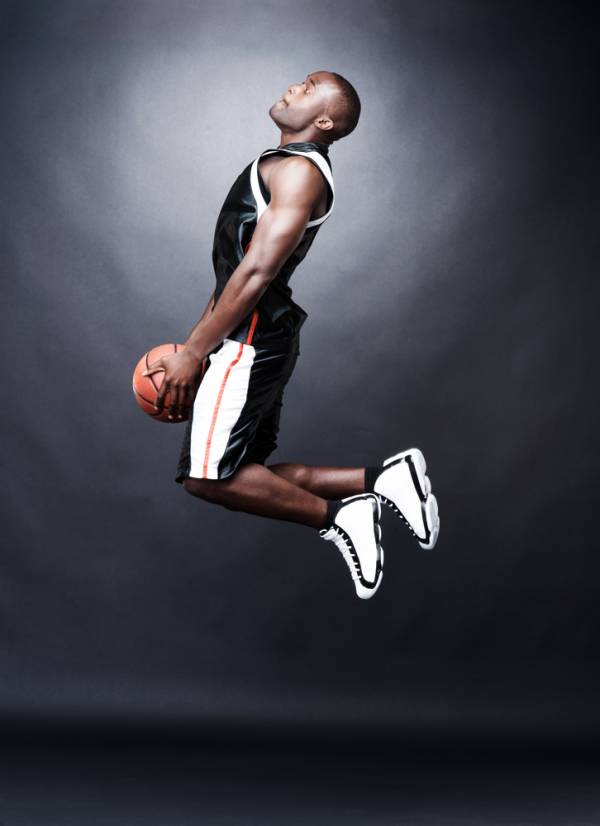There’s been a lot of talk about power for the last, well, forever really. The reason for this is that according to researchers, if all technical issues are equal success tends to come to the athlete who can generate the most power. Dr. Dan Baker, a prominent ‘hands-on’ researcher who has published a ton of stuff in this area summed it up perfectly when he stated that, “…levels of (upper-body) strength and power clearly differentiate between players of different levels of achievement…”1
Great, let’s all train for power. However, to do that we need to know just what power is, and that’s aim of this article.
How Hard Are You Working?
We know that when we push or pull against an object we’re applying a force (if you don’t know this, see my article on force-time curves), and if we push or pull hard enough the object will move, in accordance with Newton’s first law of motion. When the object you’re applying force to moves in the same direction, you’re performing work – the product of force and distance.
This is very useful, because, like impulse, work adds greater detail to any description of the mechanical characteristics of a movement by combining effort (force) with outcome (displacement). We can get a pretty good idea of how much work is been performed by first estimating the force applied to the mass and then multiplying it by the distance that it travels.
A Lifting Based Example – The Deadlift
If you load a barbell up to 200 kg and your deadlift range of motion is 50 cm, the vertical work that you perform can be calculated like so:
Force = 200 (barbell mass) × 9.81 (acceleration of gravity) = 1, 962 N
Then multiply this by the distance you lift the barbell:
1, 962 × 0.50 (meters) = 981 J (joules) of work
Pretty simple, right? However, we must remember that other work was performed during this lift. For example, work was performed to move our body’s center of mass. However, unless you have access to the sort of kit that’s typically only found in well-equipped biomechanics laboratories you won’t be able to measure this. For those of you who are interested, Dr. John Garhammer provides a range of examples in his excellent review of power measurement (see the reference list at the end of this article).
If we we’re feeling ambitious, we can take the example of the vertical jumper from the force-time curves article and calculate the work he performed like so:
Jumper weight (force) = 787 N × 0.27 m (his jump height) = 212.5 J
Quite a difference, and this is where power comes in.
What About Energy?
But hang on, what about energy? Mechanical energy can be defined as the capacity to perform mechanical work. Humans possess mechanical energy, and this is typically found in the form of either potential energy or kinetic energy, where the former can be simplified as existing as a consequence of position:
Potential energy = mass × acceleration of gravity × height (or distance)
And the latter can be simplified as existing as a consequence of motion:
Kinetic energy = mass × velocity2 ÷ 2
This gives us a little more information, but means that we need some way of measuring how quickly the mass we’re interested in is moving. It also highlights that what we’ve been able to calculate so far is actually an estimate that can be made using the relatively little information we have. Ideally, we’d have a record of either motion or force (or both) recorded over known time intervals to obtain accurate records of work, energy or power. (Page 97 of Drechsler’s Encyclopedia of Weightlifting provides a relatively simple way this can be done.)
Interestingly, at the top of the vertical jump our jumper has potential energy:
Potential energy = mass (80 kg – ish) × acceleration of gravity (9.81) × height (0.27) = 212 J
Which should look familiar (see above), but he has no kinetic energy:
Kinetic energy = mass (80 kg – ish) × velocity2 (0 – top of the jump) ÷ 2 = 0
Which shouldn’t come as a surprise! If we were to calculate the kinetic energy of our jumper at take off, though, it would be much more than 0:
Kinetic energy = mass (80 kg – ish) × velocity2 (2.31 m/s at takeoff) = 5.34 ÷ 2 = 213.4 J
This number is starting to look familiar (give or take a few joules). So, we perform work by applying a force to a mass to move it. We do this and our capacity to perform work changes. Pretty simple.
The Definition of Power
Now we get to the fun bit – power. What is it? Power is simply the rate at which we perform work. So, it’s a combination of force and how quickly we can move something in a given direction, which is also known as velocity (think back to my first article). Therefore, power can be calculated in one of two ways:
Power = work ÷ time or Power = force × velocity
Why Is Power So Important?
To illustrate its importance let’s think back to the two examples we used earlier. (However, I’d once again recommend you find a copy of Garhammer’s paper for other examples, and a classic lifting-related example comparing deadlift and clean work and power can also be found in Dr, Pat O’Shea’s book: Quantum Strength Fitness II.)
Now, if you have a 300 kg deadlift the 200 kg lift we discussed earlier would represent about 67% of this one repetition maximum (1 RM), which means that you could probably lift it relatively quickly, in about 1.5 seconds. Therefore, an estimate of average power applied to the barbell could be obtained like so:
Force = (1, 962 – see above) × velocity (0.50 m ÷ 1.5 s = 0.33 (ish)) = 647 W (watts)
Of course, the heavier the lift, relatively to your 1RM, the longer it’s going to take to complete. The longer the lift takes to complete the less power you’ll be applying to the bar.
 This demonstrates the simplest way to train power – train strength. Get stronger and you’ll be able to lift the same amount of weight (say 200 kg) faster. You’ll need to apply the same amount of (average) force, but velocity should be greater because you’re able to lift more quickly.
This demonstrates the simplest way to train power – train strength. Get stronger and you’ll be able to lift the same amount of weight (say 200 kg) faster. You’ll need to apply the same amount of (average) force, but velocity should be greater because you’re able to lift more quickly.
Of course, once you’ve saturated the whole ‘getting stronger’ thing there are other methods that can be used, some of which have been discussed on Breaking Muscle, and some that I’ll try and touch on in future articles.
Where Do You Stand?
Finally, let’s consider a simple method that will let you figure out where you stand. You can measure your vertical jump quite easily, and if you do this you can get a pretty good estimation of your peak power output by doing some simple math. You could obtain jump height from video footage (from your phone for example – see reference to Drechsler above) and, if you know how many frames it records per second, calculate ‘flight time’ – the time you spend in the air. Jump height can then be recorded like so:
Jump height = (flight time2 × 9.81) ÷ 8
An even easier way of recording jump height can be found here – an excellent resource that also provides ‘power calculators’ toward the middle of this page. Of all of these I would recommend using the ‘Sayer’s Equation.’
So there, you have it. Power is the product of how quickly something moves when we push or pull it, and has obvious implications for sports performance. This, of course, is why such a big deal is made about it, and it’s something I’d like to go into more detail with in future articles.
References:
1. Baker, Daniel. “Differences in strength and power among junior-high, senior-high, college-aged, and elite professional rugby players.” Journal of Strength and Conditioning Research 16, no. 4 (2002): 581-585.
2. Drechsler, Arthur. The Weightlifting Encyclopedia: A Guide to World Class Performance. Flushing, NY: A is A Communications, 1998.
3. Garhammer, John. “A review of power output studies of Olympic and Powerlifting: Methodology, performance prediction, and evaluation tests.” Journal of Strength and Conditioning Research 7, no. 2 (1993): 76-89.
4. O’Shea, Patrick. Quantum Strength Fitness II (Gaining the Winning Edge). Patrick’s Books, 2000.
Photos courtesy of Shutterstock.






